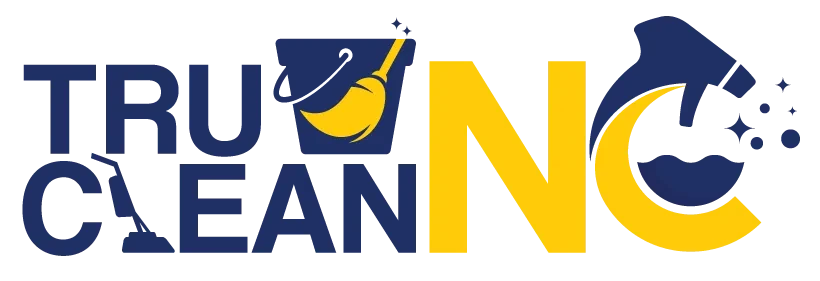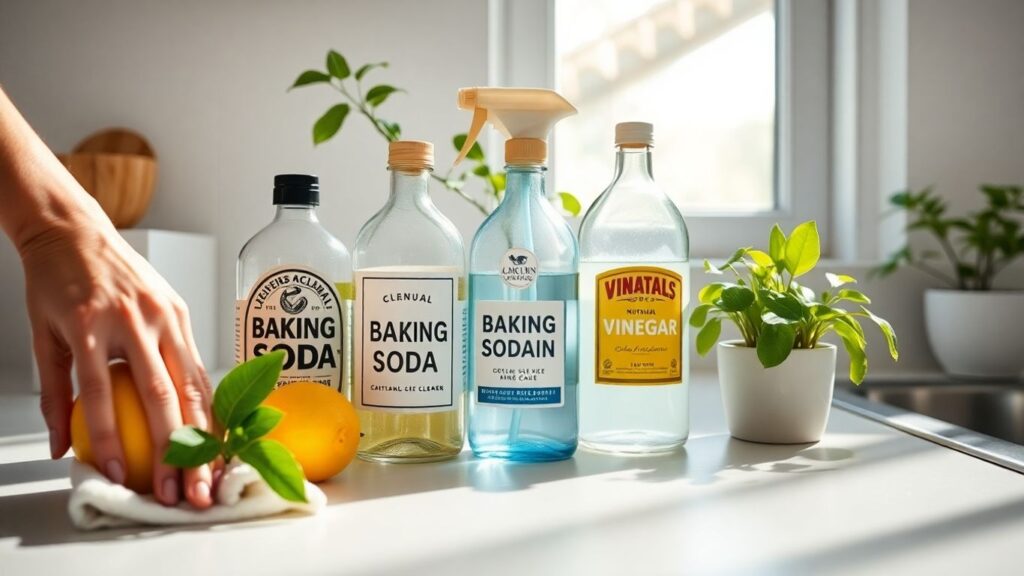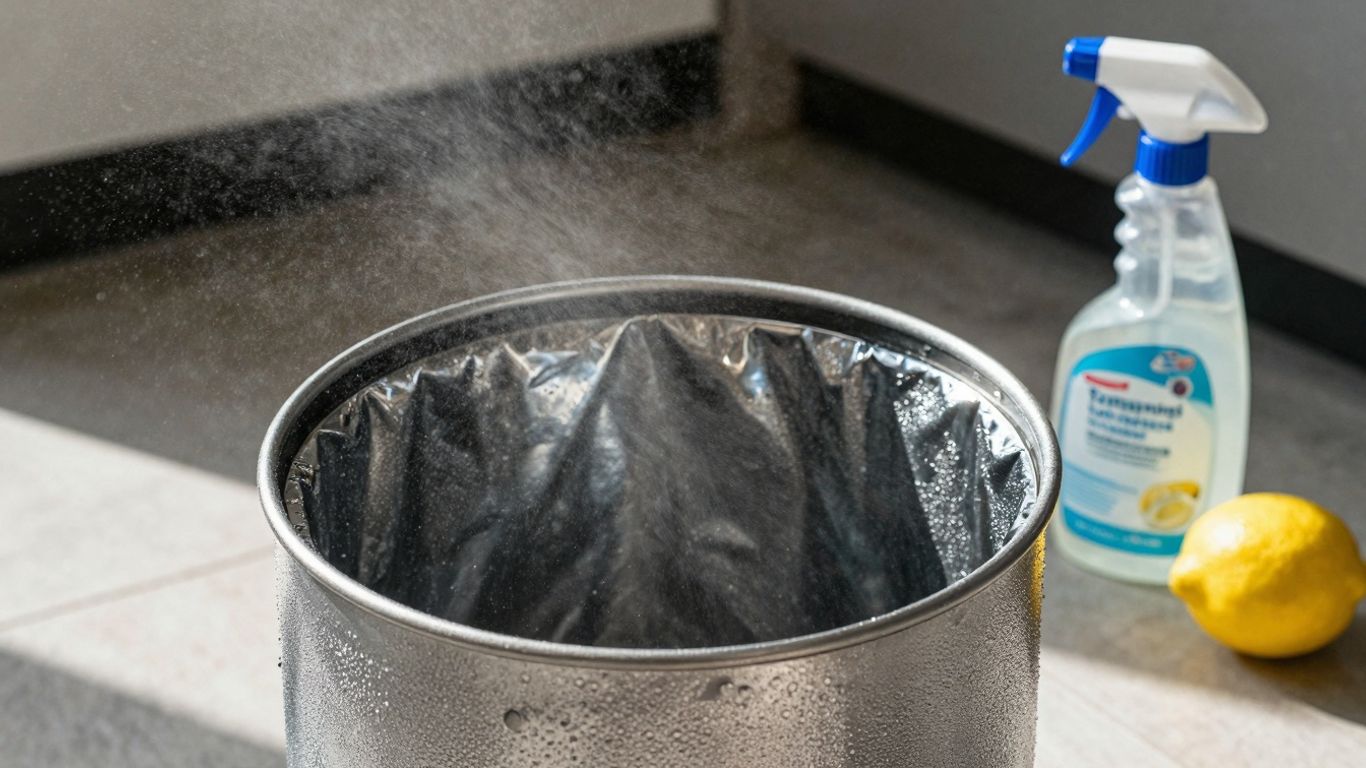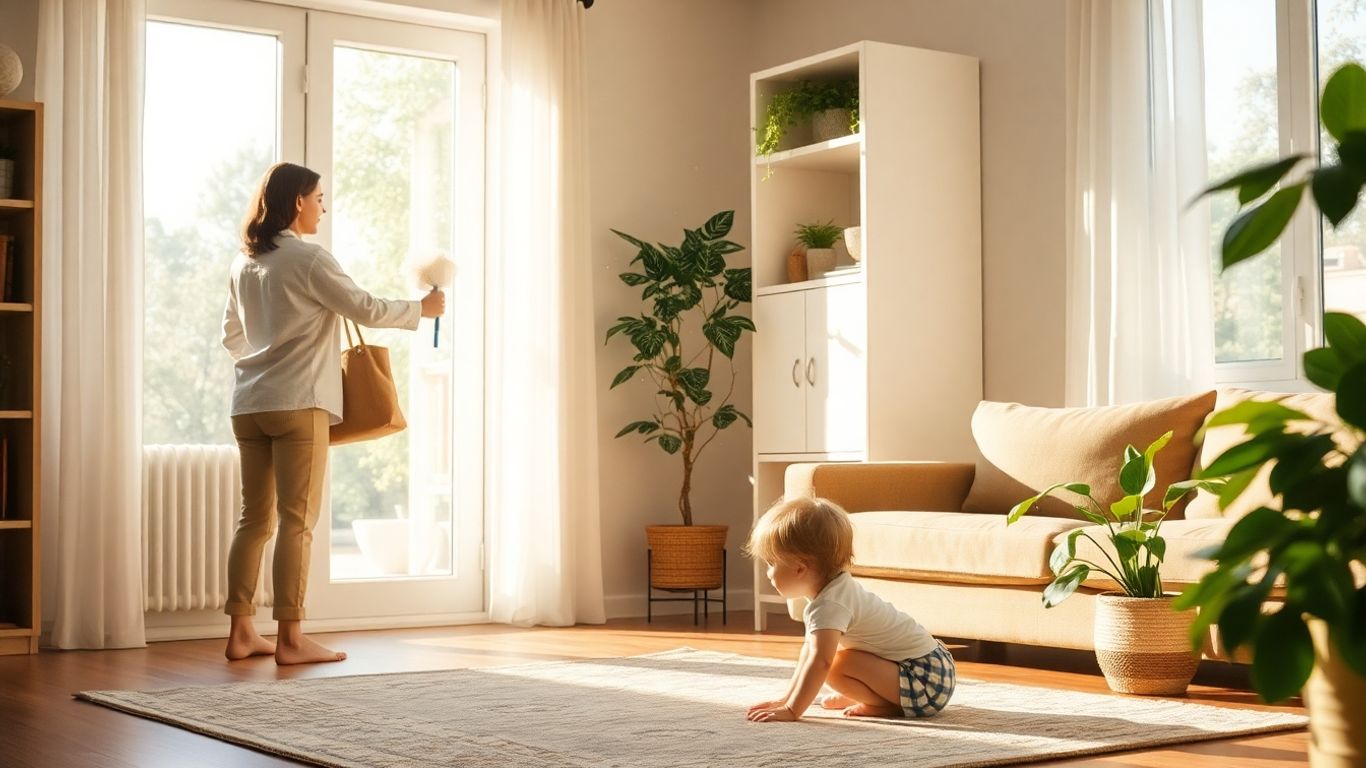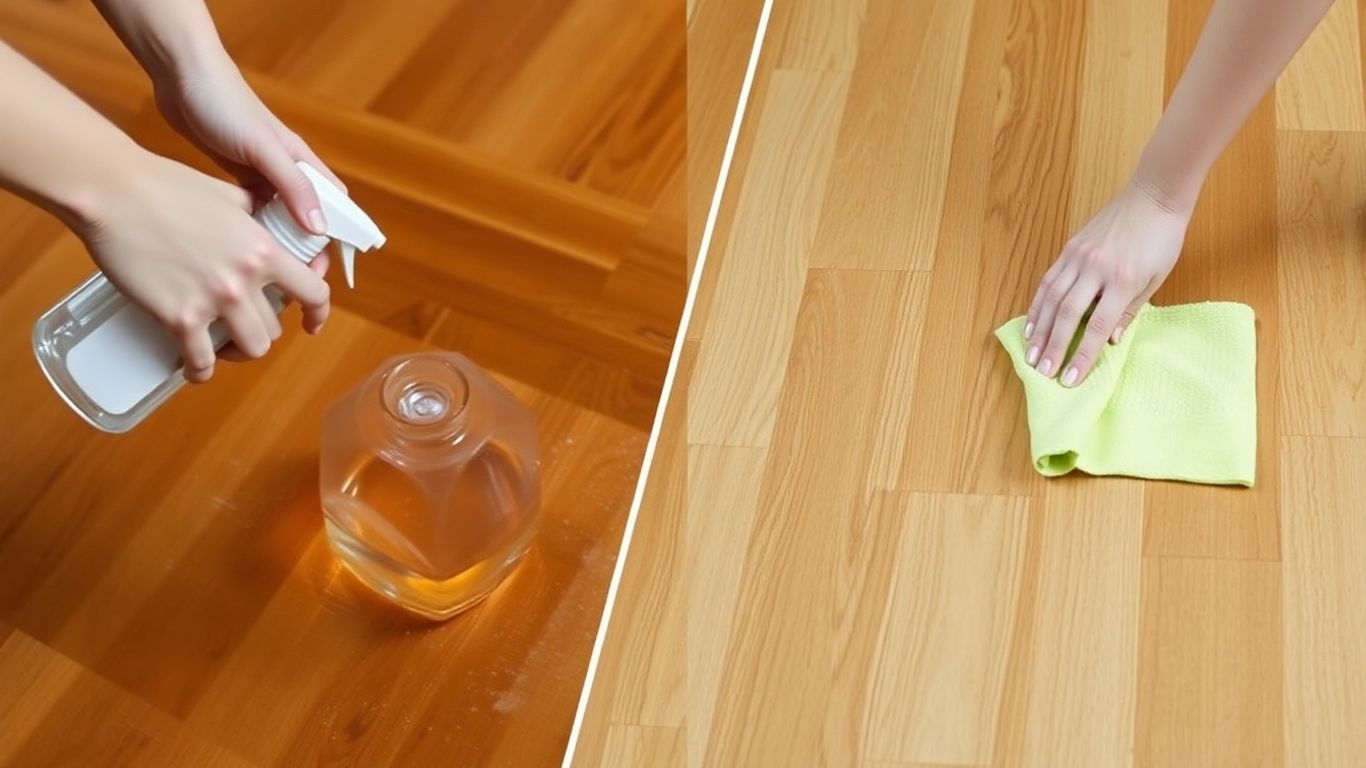Tired of that strong chemical smell after cleaning? Me too. It turns out, you don’t need harsh stuff to get your home looking and smelling fresh. We can actually clean effectively using things from our own kitchens and making smart choices. This article is all about making that switch to Eco-Friendly Cleaning Solutions, so your home is clean and your family is safe, all while being a bit kinder to the planet. Let’s get started!
Key Takeaways
- You can achieve a spotless home without relying on harsh chemicals by using natural ingredients and simple DIY methods.
- Understanding the ingredients in conventional cleaners and recognizing greenwashing tactics helps you make safer choices.
- Making your own Eco-Friendly Cleaning Solutions using pantry staples like vinegar and baking soda is cost-effective and reduces waste.
- Adopting sustainable cleaning habits, such as using reusable tools and involving the family, makes green cleaning a lasting lifestyle.
- Switching to green cleaning protects your family’s health, benefits the environment, and can save you money in the long run.
Embrace The Power Of Natural Ingredients
Who knew that your kitchen cabinets were hiding the secret to a sparkling clean home? It turns out, you don’t need a cabinet full of fancy, chemical-laden cleaners to tackle everyday messes. Many common pantry staples are surprisingly effective at cleaning, deodorizing, and even disinfecting. It’s a game-changer for your wallet and the planet.
Pantry Staples For Sparkling Surfaces
Let’s talk about the real MVPs of natural cleaning. These are the items you probably already have, ready to go:
- White Vinegar: This stuff is a powerhouse. Its acidity cuts through grease and grime like nobody’s business, and it’s a fantastic odor neutralizer. Just be mindful not to use it on porous surfaces like granite or marble, as it can be a bit too harsh.
- Baking Soda (Sodium Bicarbonate): Think of baking soda as your gentle scrubbing buddy. It’s mildly abrasive, perfect for lifting stuck-on food or soap scum without scratching. Plus, it’s a champion at absorbing smells.
- Hydrogen Peroxide: This is a milder bleaching agent that can help with stains and has some disinfecting properties. It’s a good alternative when you need a little extra power without going for the heavy stuff.
- Castile Soap: A plant-based soap that’s super concentrated. A little goes a long way, and it’s gentle enough for most surfaces. You can find it in various scents, or unscented if you prefer.
These ingredients are the foundation for so many DIY cleaning solutions. You can create effective cleaners for almost any job, from wiping down countertops to scrubbing sinks. It’s amazing how simple ingredients can make such a difference in keeping your home clean and fresh. For more ideas on maintaining a tidy home, check out these deep cleaning tips.
Harnessing The Scent Of Nature
One of the best parts about switching to natural cleaners is ditching those artificial, overpowering chemical smells. Instead, you can fill your home with the subtle, refreshing scents of nature. Citrus peels, like those from lemons or oranges, are fantastic for this. You can infuse vinegar with them to create a pleasant-smelling all-purpose cleaner. Herbs like rosemary or mint can also add a lovely aroma. It makes the cleaning process feel less like a chore and more like a spa treatment for your home.
Using natural ingredients means you know exactly what you’re bringing into your home. No more mystery chemicals or worrying about fumes. It’s a simple way to create a healthier environment for everyone.
Simple Solutions For Everyday Grime
Dealing with everyday messes doesn’t require a complicated arsenal. For a quick all-purpose spray, mix equal parts water and white vinegar in a spray bottle. Add a few drops of castile soap for extra cleaning power. For tougher spots, a paste made from baking soda and water can work wonders as a gentle scrub. You can even use leftover citrus peels to make a natural wood cleaner. These simple solutions are not only effective but also incredibly budget-friendly, proving that you don’t need to spend a lot to keep your home clean and healthy.
Making Smart Choices For A Healthier Home
Understanding What’s In Your Cleaners
Ever glance at the ingredient list on a conventional cleaning product and feel like you need a chemistry degree to understand it? You’re not alone. Many of these products contain chemicals that can be harsh on our bodies and the environment. Things like phthalates, ammonia, and chlorine bleach, while effective at cleaning, can also cause skin irritation, respiratory issues, and even contribute to indoor air pollution. It’s a good idea to be aware of what you’re bringing into your home, especially if you have kids or pets. Knowing the ingredients is the first step to making healthier choices.
Spotting Greenwashing Tactics
So, you’re looking for greener options, but how do you know if a product is truly eco-friendly or just pretending to be? This is where “greenwashing” comes in. Companies might use vague terms like “natural” or “eco-friendly” without much substance behind them. They might highlight one small green ingredient while the rest of the formula is still full of questionable chemicals. Always look beyond the pretty green packaging and read the ingredient list. Sometimes, a product might have a nice scent derived from essential oils, but that doesn’t automatically make the whole cleaner safe.
Choosing Safer Store-Bought Options
If making your own cleaners isn’t your jam right now, that’s totally fine! There are many great store-bought options that are much better than traditional cleaners. Brands like Seventh Generation, Ecover, and Puracy offer effective products with more transparent ingredient lists. When you’re at the store, try to look for products that are certified by reputable third parties, like EPA Safer Choice or EWG Verified. These certifications mean the product has met certain standards for health and environmental safety. It’s a good way to get peace of mind without having to mix your own solutions.
Here’s a quick guide to what to look for:
- Look for certifications: EPA Safer Choice, EWG Verified.
- Read the ingredient list: Opt for products with recognizable, plant-derived ingredients.
- Avoid: Phthalates, parabens, ammonia, chlorine bleach, synthetic fragrances.
- Consider packaging: Recycled or recyclable materials are a plus.
Making informed choices about the products you bring into your home doesn’t have to be complicated. Start by reading labels and understanding what you’re buying. Even small swaps can make a big difference in creating a healthier living space for everyone.
DIY Eco-Friendly Cleaning Solutions
Sometimes, the most effective cleaning agents are hiding right in your kitchen pantry! Making your own cleaning solutions isn’t just a fun little project; it’s a smart way to cut down on waste and avoid those strong chemical smells that can linger after a good scrub. Plus, you’ll know exactly what’s going into the bottles you use around your home.
Crafting Your Own All-Purpose Spray
This is your go-to for everyday messes. It’s super simple and uses ingredients you probably already have.
What you’ll need:
- 1 part white vinegar
- 1 part water
- Optional: A few drops of your favorite essential oil (like lemon or lavender) for scent and a little extra cleaning oomph.
How to make it:
- Mix the vinegar and water in a clean spray bottle. Glass bottles are best, especially if you add essential oils, as they can sometimes break down plastic over time.
- If using, add the essential oil and give the bottle a gentle shake.
- Label your bottle clearly!
Use this spray on countertops, sinks, and other surfaces. Just give it a quick spray and wipe with a clean cloth. It’s great for cutting through grease and general grime.
Whipping Up A Gentle Scrubber
For those tougher spots that need a bit more elbow grease, a simple paste works wonders. It’s abrasive enough to tackle stuck-on food but gentle enough not to scratch most surfaces.
Ingredients:
- Baking soda
- Water (or liquid castile soap for extra cleaning power)
How to make it:
- In a small bowl, combine baking soda with just enough water or castile soap to form a thick paste. You want it to be spreadable but not runny.
- Apply the paste directly to the area you need to clean.
- Let it sit for a few minutes, especially on stubborn spots.
- Gently scrub with a sponge or cloth, then rinse thoroughly.
This paste is fantastic for cleaning sinks, stovetops, and even the inside of your oven. Just be sure to test it on an inconspicuous spot first if you’re concerned about the surface.
Creating A Streak-Free Glass Cleaner
Getting windows and mirrors to shine without leaving behind annoying streaks can be tricky. This simple recipe is a game-changer.
What you’ll need:
- 1/4 cup white vinegar
- 1/4 cup rubbing alcohol (isopropyl alcohol)
- 1 tablespoon cornstarch
- 2 cups water
How to make it:
- Combine all ingredients in a spray bottle.
- Shake well before each use, as the cornstarch can settle.
Spray lightly onto glass surfaces and wipe clean with a lint-free cloth or crumpled newspaper for a brilliant, streak-free shine. The rubbing alcohol helps it dry quickly, and the cornstarch acts as a mild abrasive to lift away grime without scratching.
Remember, when making your own cleaners, it’s best to make smaller batches. This way, you ensure they stay fresh and effective. For solutions with vinegar or essential oils, always opt for glass containers to keep them stable.
Beyond The Bottle: Sustainable Cleaning Habits
So, you’ve started making your own cleaners or picked up some eco-friendly options. That’s awesome! But cleaning green isn’t just about what you use; it’s also about how you approach the whole cleaning process. Think of it as a lifestyle shift, not just a one-time fix. It’s about making choices that are good for your home and the planet, day in and day out.
Reducing Waste With Reusable Tools
One of the biggest wins with green cleaning is cutting down on trash. Those disposable wipes and paper towels? They add up fast, both in your bin and in landfills. Let’s switch things up!
- Microfiber Cloths: These are your new best friends. They grab dirt and grime like magic and can be washed and reused hundreds of times. Keep a few handy for dusting, wiping counters, and even cleaning windows.
- Sponges and Scrub Brushes: Look for natural options made from cellulose, loofah, or wood. They work just as well as their plastic counterparts but break down more easily when they’re finally done.
- Glass Spray Bottles: If you’re making your own cleaners, ditch the old plastic bottles. Essential oils can sometimes degrade plastic over time, and glass is just way more durable and eco-friendly for long-term use.
Incorporating Green Cleaning Into Your Routine
Making green cleaning a habit doesn’t have to be overwhelming. Start small and build from there. You might be surprised how quickly it becomes second nature.
The key is to start with one thing. Maybe it’s swapping out your all-purpose spray first. Once that feels easy, tackle the glass cleaner or the bathroom scrub. Small wins add up and make the whole process feel manageable and even enjoyable.
Here’s a simple way to get started:
- Pick Your First Swap: Choose one conventional cleaner you use regularly and replace it with a DIY version or a greener store-bought option.
- Gather Your Tools: Make sure you have your reusable cloths and containers ready.
- Clean with Confidence: Use your new green cleaner and notice how well it works!
- Repeat and Expand: Once you’re comfortable, choose another product to switch out.
Making It A Family Affair
Cleaning doesn’t have to be a solo mission. Getting everyone involved makes the chore lighter and teaches valuable lessons about responsibility and caring for the environment.
- Assign Age-Appropriate Tasks: Little ones can help wipe down surfaces with damp cloths or sort laundry, while older kids can handle mixing simple cleaners or tackling bigger cleaning jobs.
- Make it Fun: Put on some music, set a timer, and turn cleaning into a friendly competition. Who can finish their task first?
- Talk About Why: Explain to your family why you’re choosing greener options. Discuss how it helps keep everyone healthy and protects the planet for the future. This understanding makes the effort more meaningful for everyone.
The Benefits Of Going Green
Switching to eco-friendly cleaning isn’t just about having a tidy home; it’s a choice that ripples outwards, positively impacting your family, the planet, and even your wallet. It’s a move towards a healthier, more sustainable way of living that feels good on multiple levels.
Protecting Your Family’s Well-being
Traditional cleaning products often contain a cocktail of chemicals that can be harsh. Think about it: when you spray something, those tiny particles can float around in the air, and if you touch a surface, those chemicals can transfer to your skin. For families, especially those with young children or pets, this exposure can be a concern. Green cleaning swaps out these potentially irritating ingredients for gentler, often plant-derived ones. This means less worry about skin irritation, fewer fumes to breathe in, and a generally safer environment for everyone. It’s about creating a sanctuary at home, free from unnecessary chemical exposure. You can find many effective natural cleaning products that are beneficial for children, pets, and individuals with sensitivities, as they help reduce toxic load and hormone disruptors, contributing to a healthier living environment.
Kindness To The Planet
Every time we clean, what happens to the water that goes down the drain? Those harsh chemicals from conventional cleaners can make their way into our waterways, affecting aquatic life and potentially even our drinking water. Green cleaning products, on the other hand, are typically made with biodegradable ingredients that break down more easily and harmlessly. By choosing these options, you’re actively reducing pollution and supporting a healthier ecosystem. It’s a small change in your cleaning routine that contributes to a much larger effort to protect our natural world.
Saving Money With Smart Swaps
Going green doesn’t have to mean spending more green. In fact, many eco-friendly cleaning methods can actually save you money. Think about DIY solutions using pantry staples like vinegar, baking soda, and lemon juice – these are incredibly inexpensive and surprisingly effective. Even when buying green products, many are concentrated, meaning a little goes a long way, and you’ll need to replace them less often. Plus, by reducing waste with reusable cleaning tools instead of disposable ones, you cut down on ongoing costs. It’s a win-win: a cleaner home and a healthier bank account.
Making the switch to green cleaning is more than just a trend; it’s a conscious decision to prioritize health and sustainability. It’s about recognizing that the products we use in our homes have a direct impact on our well-being and the environment around us. Embracing natural ingredients and mindful habits creates a cleaner, safer space for your loved ones and contributes to a healthier planet for future generations.
Keep It Clean, Keep It Green!
So there you have it! Going green with your cleaning routine doesn’t have to be some huge, complicated thing. It’s really about making small, smart choices that add up. Whether you’re whipping up your own vinegar spray or just grabbing a more natural cleaner from the store, you’re doing great things for your home and the planet. It feels good to know you’re not bringing harsh stuff into your space, right? Keep experimenting, find what works for you, and enjoy that fresh, clean feeling without all the chemical worries. Happy green cleaning!
Frequently Asked Questions
What are the main benefits of using natural cleaning products?
Using natural cleaners is great because they’re safer for you, your family, and the planet. They often use simple ingredients that don’t pollute the air in your home or waterways when washed down the drain. Plus, many natural cleaners are gentle on your skin and can even save you money in the long run because you can make them yourself with common household items.
Can I really clean my whole house with just pantry items like vinegar and baking soda?
Absolutely! Things like white vinegar are fantastic for cutting through grease and getting rid of smells. Baking soda is a gentle scrubber and also great for tackling odors. You can combine these with other simple things like lemon juice or castile soap to create effective cleaners for almost any mess.
Are homemade cleaners as effective as the ones I buy at the store?
For most everyday cleaning tasks, homemade cleaners are just as effective, if not more so, because you know exactly what’s in them. While they might not always provide the same level of ‘sterilization’ as some harsh chemical cleaners, they do a great job of cleaning, disinfecting mildly, and tackling grime without the harmful side effects.
How do I know if a store-bought ‘green’ cleaner is actually eco-friendly?
It can be tricky! Some companies use fancy words to make their products sound better than they are, which is called ‘greenwashing.’ Always try to read the ingredient list and look for certifications from trusted groups. If a label is vague or doesn’t list ingredients, be cautious. Websites like the Environmental Working Group (EWG) can help you check product safety.
What’s the best way to start switching to green cleaning if I feel overwhelmed?
Don’t try to change everything at once! Start small. Pick one product you use a lot, like your all-purpose spray, and replace it with a natural version, either store-bought or homemade. Once you feel good about that change, move on to the next item. It’s a gradual process that makes it easier to stick with.
How should I store homemade cleaning solutions?
It’s best to store homemade cleaners in clean glass bottles or jars with tight lids. If your cleaner has essential oils in it, glass is a must because oils can break down plastic over time. For mixtures that fizz, like baking soda and vinegar, it’s usually best to make them right before you need them so they work their best.
